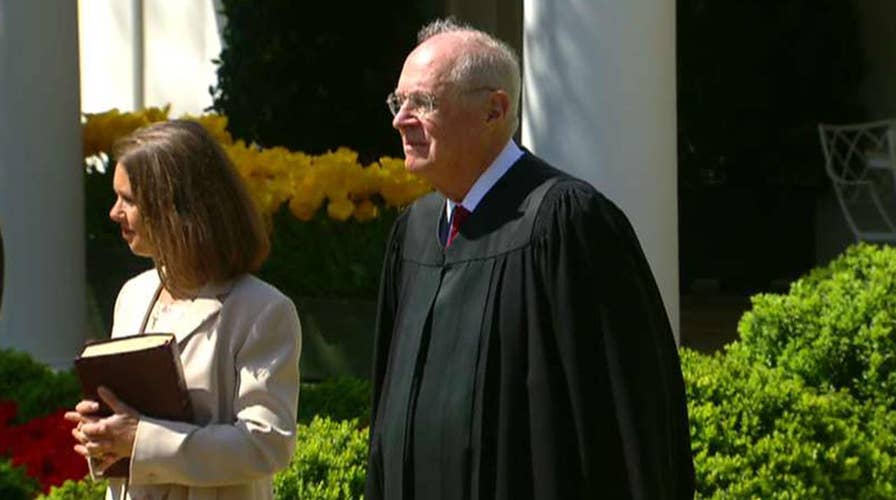Trump to nominate second Supreme Court Justice
Washington Times reporter Alex Swoyer on what Justice Kennedy's retirement could mean for the Supreme Court.
Supreme Court Justice Anthony Kennedy’s retirement, announced Wednesday, will do more than reshape the high court. It also scrambles the campaign for the November midterm elections.
The 2016 presidential election showed how the Supreme Court can loom large in determining the candidate who voters support and the intensity of that support. Throughout 2016, both Donald Trump and Hillary Clinton used the Supreme Court vacancy created by the death of Justice Antonin Scalia to motivate their supporters to vote.
Exit polls showed Trump won that turnout battle. A total of 26 percent of Trump voters told pollsters that Supreme Court nominees were the most important factor in their voting, compared with only 18 percent of Clinton voters who felt that way.
The more the Supreme Court has gone beyond the role envisioned for it by the Founding Fathers and become a political actor, the more any vacancy on the court energizes partisans on both sides.
Trump was able to pile up such big margins in part because he told evangelical voters that the 2016 election would decide the direction of the Supreme Court.
So who will benefit most from the debate over Justice Kennedy’s retirement?
“This is every Democrat candidate’s worst nightmare, as it changes the game on turnout,” GOP pollster Chris Wilson told the Washington Examiner. “It doesn’t just close the enthusiasm gap, it injects rocket fuel into the evangelical base that helped Trump win swing states.”
Democratic pollster Geoff Garin took a different approach, claiming that the injection of a court vacancy into the midterm campaign will only fuel anti-Trump fervor.
“The stakes for Democratic voters in this election already were extremely high, and the Supreme Court vacancy supercharges all of that,” Garin told the Washington Post.
Some more neutral observers believe that while both sides will use the court battle to boost turnout, the advantage will go to the Republicans. The key races that will determine who controls the Senate next year will largely be fought in 10 states that Donald Trump carried in 2016 but that currently have Democratic incumbents up for re-election.
“More Democrats voting in already liberal New York over the Supreme Court doesn’t change anything,” Democratic pollster Doug Schoen told me.
But a Supreme Court vacancy may energize turnout among evangelical Christians and other social conservative voters. In 2016, fully 81 percent of self-identified white, evangelical Christians told exit pollsters they voted for Trump – while just 16 percent went for Clinton. Trump’s huge margin with these voters exceeded the victory margins they gave GOP presidential candidates George W. Bush, John McCain and Mitt Romney.
Trump was able to pile up such big margins in part because he told evangelical voters that the 2016 election would decide the direction of the Supreme Court. He went so far as to release a list of his possible nominees before the election to reassure conservatives he would pick a reliable conservative and to reinforce how importantly he viewed the decision to fill any vacancy.
The effort paid off.
Philip Bump of the Washington Post notes that Trump won the key states of Michigan, Pennsylvania and Wisconsin – which have a total of 46 electoral votes – by a total of only about 78,000 votes out of 14 million cast. The exit polls indicate that about 1.7 million of the voters in those states thought the Supreme Court was the most important reason for them to cast ballots and voted for Donald Trump accordingly.
Now, two years later, President Trump is betting he can once again ride the Supreme Court issue into the 2018 elections and not only see his party keep control of the House, but add to its margin in the Senate.
So there’s a lot more at stake in the debate over Justice Kennedy’s successor than just who will fill his Supreme Court seat.

